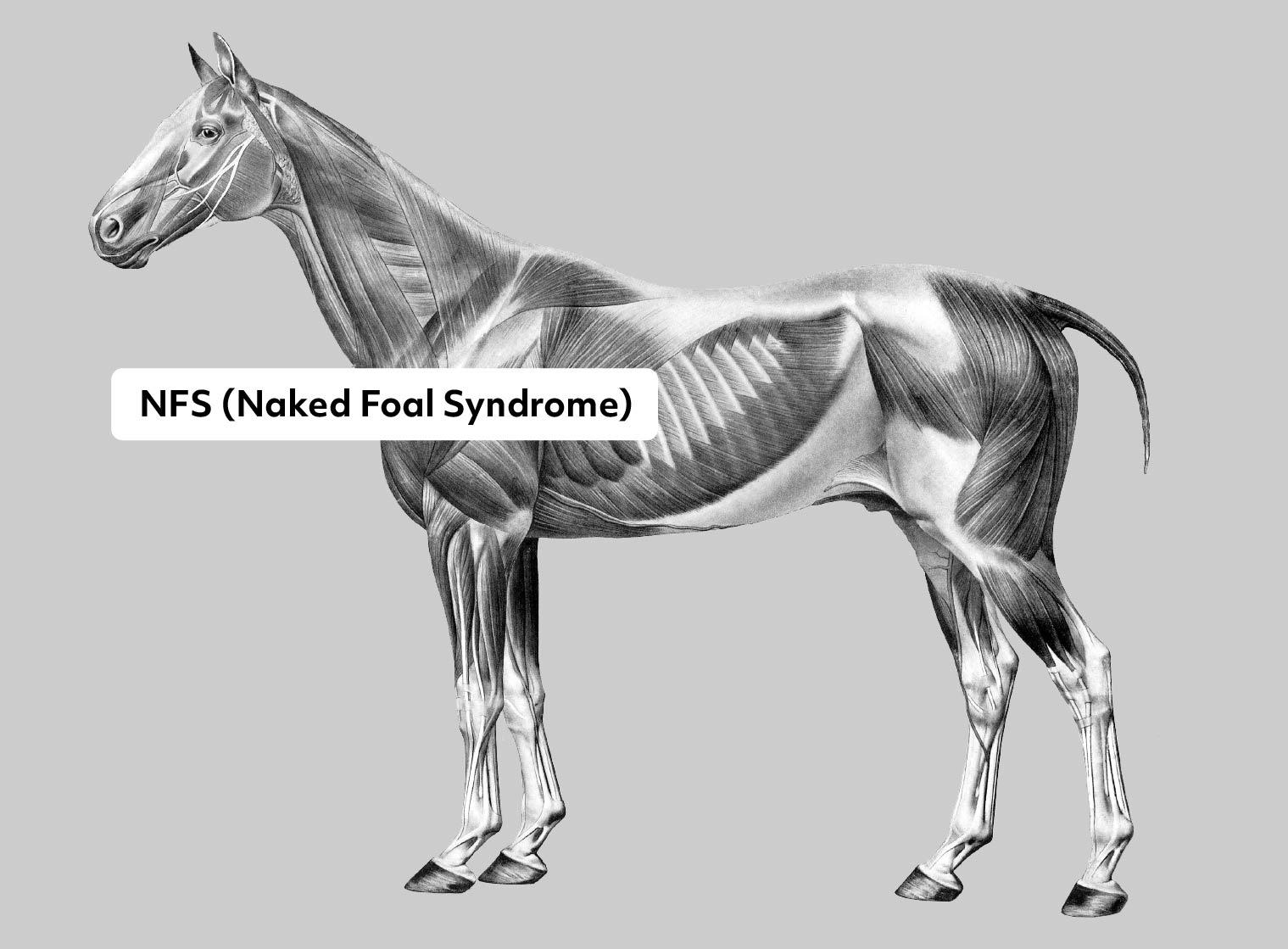Naked Foal Syndrome (NFS)
Gene or Region: ST14
Reference Variant: G
Mutant Variant: T
Affected Breeds: Akhal Teke
Research Confidence: Moderate confidence, strong correlation in larger studies
Explanation of Results: nfs/nfs = homozygous for Naked Foal Syndrome, trait likely expressed/likely lethal nfs/n = heterozygous for Naked Foal Syndrome, carrier n/n = no variant detected
General Description for Naked Foal Syndrome
Naked Foal Syndrome (NFS) is a recessive genetic disorder resulting in the birth of foals with little to no hair and a general weakness with death occurring early in life (weeks to months).
References
Bauer, A., Hiemesch, T., Jagannathan, V., Neuditschko, M., Bachmann, I., Rieder, S., Mikko, S., Penedo, M. C., Tarasova, N., Vitková, M., Sirtori, N., Roccabianca, P., Leeb, T., & Welle, M. M. (2017). A Nonsense Variant in the ST14 Gene in Akhal-Teke Horses with Naked Foal Syndrome. G3 (Bethesda), 7(4), 1315-1321. doi: 10.1534/g3.117.039511
More Horse Health
Foal Immunodeficiency Syndrome
Foal immunodeficiency syndrome (FIS) is a failure in the development of the adaptive immune system. At 3-6 weeks of age, once the maternal antibodies begin to degrade, foals exhibit signs of anemia, diarrhea, and pneumonia. As these foals fail to respond to treatment for infections, they are humanely euthanized at a young age.
Glanzmann Thrombasthenia
Glanzmann Thrombasthenia (GT) is a blood platelet function disorder, resulting from a reduction in the platelet fibrinogen receptor protein. Clinical signs can be characterized by bleeding on the skin or from the mouth/nostril/gastrointestinal mucosas, and may include skin rashes with blood spots under the skin, nasal bleeding, gastrointestinal and gingival bleedings.
Glycogen Branching Enzyme Deficiency
Glycogen Branching Enzyme Deficiency (GBED) is a lethal recessive disorder characterized by seizures, muscle weakness, respiratory failure, and death. Many affected foals do not make it full term and are aborted or stillborn. Carriers (gbed/n) have no known issues.
